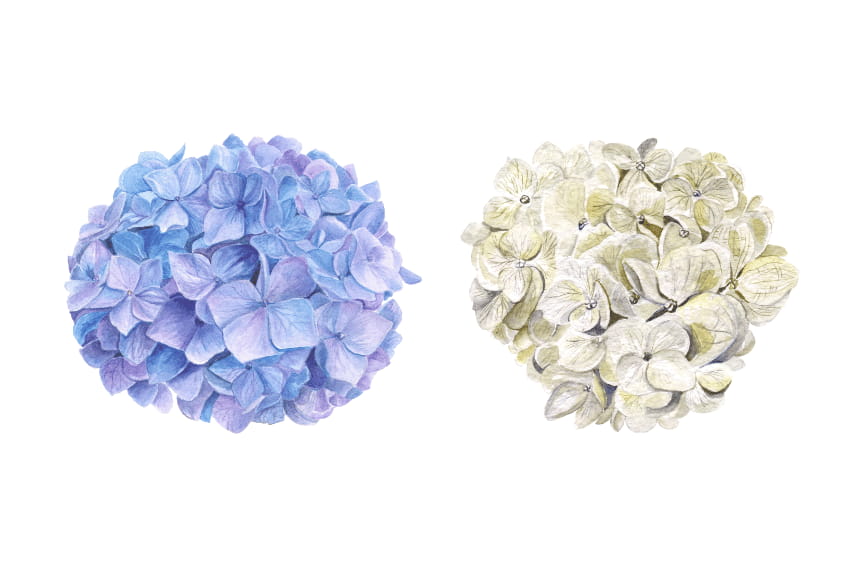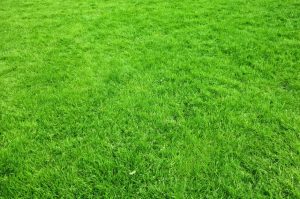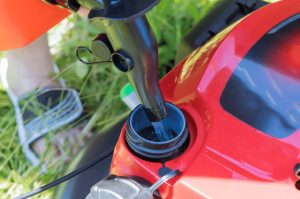At Yard Work, we’ve always had a soft spot for Hydrangeas. Over the years, we’ve garnered much experience nurturing them to their fullest potential. Pruning hydrangeas isn’t just a cut-and-dry task; it’s an art, especially in the diverse climate of Melbourne. Timing is pivotal, ensuring that these blossoms return year after year with the same vigour and vitality.
So, let’s delve into the world of hydrangeas together, exploring the optimal times and techniques to prune them in our lovely city. We’re here to guide you through each snip and trim, ensuring your hydrangeas are survivors and thriving showstoppers in your garden.

What is the best time to hydrangeas in Melbourne?
Melbourne’s winters are generally mild, making it the prime time for pruning most hydrangea varieties. Specifically, late winter to early spring, just before the new growth commences, is ideal.
This timing allows us to clearly identify and remove any old or dead wood without risking the upcoming season’s blooms.
Reasons for pruning hydrangeas in Melbourne
Melbourne’s unique climate and gardening landscape offer opportunities and challenges for hydrangea enthusiasts. Pruning isn’t just about shaping the plant; it’s a vital practice ensuring your hydrangeas’ health, longevity, and vibrancy. Let’s delve into why pruning is essential for these floral gems in our city.
Promote healthy growth
Removing old or overcrowded branches allows the plant to channel its energy into robust, new growth.
This strengthens the plant and ensures a well-balanced structure, reducing the risk of branches becoming too heavy and snapping.
Encourage new blooms
One of the joys of hydrangeas is their spectacular blooms, and pruning plays a pivotal role in this display.
You’re paving the way for fresh buds to emerge by cutting back the previous season’s growth. This practice ensures that each year, your hydrangea plant is adorned with a profusion of vibrant, healthy flowers that are a testament to your gardening prowess.
Remove dead or diseased branches
Melbourne’s fluctuating weather can sometimes take a toll on our plants. Dead or diseased branches can become a haven for pests or fungal infections.
Regularly inspecting and pruning away these problematic sections will safeguard the plant’s overall health, ensuring it remains vibrant and disease-free.
Pruning before and after flowering
The timing of your pruning can significantly impact the flowering of your hydrangeas. Pruning just before the flowering season ensures the plant focuses its energy on producing spectacular blooms.
On the other hand, pruning right after flowering allows the plant to channel its resources into strengthening its roots and overall structure, preparing it for the next season.
Different types of hydrangeas and pruning techniques
Hydrangeas are a favourite among Melbourne gardeners with their diverse shapes, sizes, and colours. But it’s essential to remember that not all hydrangeas are created equal. Each type has its unique characteristics and, consequently, its pruning needs.
At Yard Work, we’ve had the pleasure of tending to various hydrangea types over the years, and here’s a breakdown of some popular ones and their respective pruning techniques.
Big Leaf Hydrangea (Hydrangea macrophylla)
Often gracing Melbourne gardens with iconic blue or pink blooms, Big Leaf Hydrangeas are a sight.
These plants primarily flower on old wood. It’s best to prune them shortly after they’ve finished blooming, usually in late summer. Focus on removing faded flower heads and any dead or weak stems. Be cautious not to prune too heavily, as this can reduce the blooms for the next season.
Oakleaf Hydrangea (Hydrangea quercifolia)
Recognisable by their oak leaf-shaped foliage, these hydrangeas bring a unique texture to the garden.
Oakleaf hydrangeas bloom on old wood. Early spring is the best time to prune, removing dead wood and shaping the plant. However, extensive pruning isn’t typically necessary for this variety, as they naturally maintain a pleasing shape.
Panicle Hydrangea (Hydrangea paniculata)
These hydrangeas stand out with their cone-shaped flower clusters and are quite adaptable to various soil types.
Unlike the previous types, Panicle hydrangeas bloom on new wood. This means they can be pruned in late winter or early spring. You can cut them back quite hard, even down to a few main stems, and they’ll reward you with vigorous growth and abundant blooms.
Smooth Hydrangea (Hydrangea arborescens)
Known for their large, round flower heads, Smooth Hydrangeas are a delightful addition to any garden.
These hydrangeas also bloom on new wood. Prune them back hard in late winter for a bountiful bloom, leaving just a few main stems. This encourages strong new growth and larger flower heads.
In our Melbourne gardens, hydrangeas are more than just plants; they’re a testament to the beauty of nature and the rewards of diligent care. By understanding the unique needs of each hydrangea type, we can ensure they continue to thrive and enchant us season after season. And remember, whenever you’re in doubt or need a gardening companion, Yard Work is always here to help.

Tools needed for pruning hydrangeas in Melbourne
Like any gardening task, pruning hydrangeas requires the right tools to do the job efficiently and safely.
For our fellow Melbourne gardeners, here’s a list of essential tools you’ll need when tending to your hydrangeas:
- Hand pruners (Secateurs): Ideal for cutting stems up to 2 centimetres in diameter. They offer precision, allowing you to make clean cuts close to the main stem or base of the plant. Always opt for a sharp, high-quality pair. Dull blades can damage the plant and hinder its recovery post-pruning.
- Loppers: Loppers come to the rescue for those thicker branches that hand pruners can’t handle. They can cut stems up to 5 centimetres in diameter. Ensure the blades are sharp and the handles are comfortable to grip, especially if tackling a large hydrangea bush.
- Pruning saw: A pruning saw is essential for the oldest and thickest stems. Its serrated blade can handle branches over 5 centimetres in diameter. Opt for a foldable design for easy storage and safety.
- Gardening gloves: Protect your hands from scratches, thorns, and any potential irritants on the plant. Choose gloves that offer a good grip, especially when handling tools, and are made of breathable material to keep your hands comfortable.
- Garden waste bag or bin: Collect and dispose of the pruned stems and leaves. Opt for a sturdy bag or bin that can handle the weight of wet plant material.
- Disinfectant or rubbing alcohol: Clean and disinfect your tools before and after pruning. This practice prevents the spread of diseases between plants. Wipe the blades of your pruners, loppers, and saw with a cloth soaked in disinfectant or rubbing alcohol.
In our experience, having the right tools makes the task more manageable. It ensures that our hydrangeas remain healthy and vibrant. Remember, pruning is as much about care and love as it is about technique!
Step by step guide to pruning hydrangeas
Pruning hydrangeas might initially seem daunting, especially with their lush growth and myriad branches. But with a systematic approach, it becomes a rewarding task that ensures the health and beauty of your plants.
Step 1: Assess the plant and identify dead/diseased branches
- Begin by taking a good look at your hydrangea bush. Familiarise yourself with its shape and size.
- Look for branches that appear brown, dry, or brittle. These are typically the dead branches.
- Also, watch for any signs of disease, like discoloured leaves, unusual growths, or fungal infections.
Step 2: Cut back the dead or diseased branches
- Using your hand pruners or loppers (depending on the thickness of the branch), make a clean cut to remove the dead or diseased branches. Ensure you cut at a slight angle, about 5 millimetres above a healthy bud.
- For diseased branches, it’s crucial to disinfect your tools after each cut to prevent the spread of disease. A quick wipe with rubbing alcohol or disinfectant will do the trick.
Step 3: Cut back overgrown branches
- Overgrown branches can make the plant look untidy and may hinder the growth of new shoots.
- Identify branches that are crossing over each other or growing in unwanted directions.
- Using your tools, trim these branches back to maintain the desired shape of the plant. Remember to cut just above a bud or branching point to encourage new growth in the right direction.
Step 4: Remove spent blooms
- Spent blooms, or old flowers, can sap the plant’s energy and make it look less appealing.
- Snip off the old blooms using your hand pruners, cutting just below the flower head.
- This enhances the plant’s appearance and encourages the growth of new blooms in the next flowering season.
Pruning hydrangeas might require patience and practice, but the results are well worth the effort.
Tips for pruning hydrangeas in Melbourne
Pruning hydrangeas is an art, and like any art form, there are tricks of the trade that can make the process smoother and more effective.
Here are some golden nuggets to keep in mind:
- Know your variety: Different hydrangea varieties have different pruning needs. Before you make that first cut, ensure you’re familiar with the specific type of hydrangea you’re dealing with. This knowledge will guide your pruning technique and timing.
- Stay sharp: Always use sharp tools. Dull blades can cause jagged cuts, making the plant susceptible to diseases. Regularly sharpen your pruners and loppers to ensure clean cuts.
- Prune on a dry day: It’s best to prune hydrangeas when they’re dry. Wet plants can spread diseases more easily, and it’s also safer for you as wet branches can be slippery.
- Don’t overdo It: While giving your hydrangea a significant trim might be tempting, it’s essential to be conservative. Over-pruning can stress the plant and reduce its blooms for the next season.
- Observe the “third rule”: As a general guideline, try not to remove more than one-third of the plant in a single pruning session. This ensures the plant remains robust and has enough energy to produce new growth.
- Consider the age: Young hydrangeas, especially those under three, typically don’t need heavy pruning. Focus on shaping them and removing any dead or diseased growth.
- Use your hands: Sometimes, your best tools are your fingers. For delicate tasks, like deadheading or removing small, unwanted growths, pinch them off with your fingers.
- Watch the buds: Always look for the buds on the stems when pruning. These are the future growth points. Ensure you cut just above these buds to encourage new shoots and flowers.
Common mistakes to avoid
Even seasoned gardeners can sometimes need help with pruning hydrangeas. At Yard Work, we’ve seen our fair share of mishaps. To help our fellow Melbourne gardeners, here’s a list of common mistakes to watch out for and how to avoid them:
- Pruning at the wrong time: Cutting back hydrangeas too early or too late in the season can result in fewer blooms. Always ensure you’re pruning at the optimal time based on the specific variety of your hydrangea.
- Not disinfecting tools: Using dirty tools can spread diseases from one plant to another. Always disinfect your tools, especially when working on a diseased plant.
- Cutting above buds facing outwards: When pruning, it’s best to cut just above a bud facing outwards. This encourages the new growth to grow outwards, resulting in a well-shaped plant.
- Neglecting dead or diseased wood: Failing to remove dead or diseased branches can hinder the plant’s health and appearance. Regularly inspect your hydrangea and remove any problematic stems.
- Being too hesitant: While over-pruning is a concern, being too cautious and not pruning enough can lead to an overgrown and unruly plant. Don’t be afraid to make cuts when necessary.
- Not removing spent blooms: Old blooms can sap the plant’s energy. Regularly deadhead or remove spent blooms to encourage new growth and flowers.
- Not seeking advice: If you’re unsure about something, it’s always a good idea to seek advice. Whether from a fellow gardener, a local nursery, or resources like Yard Work, there’s a wealth of knowledge to tap into.
Pruning hydrangeas might seem challenging, but it’s a rewarding task with the right knowledge and approach. By being aware of these common mistakes and knowing how to avoid them, you’re setting yourself up for success and ensuring your hydrangeas remain a vibrant and cherished part of your Melbourne garden.
Final thoughts
Hydrangeas, with their captivating blooms, hold a special place in the hearts of Melbourne gardeners. While pruning might seem intricate, it’s a dance of understanding and care between the gardener and the plant.
With the right techniques, tools, and timing, these floral wonders will continue to enchant our gardens season after season!
FAQs
How far back should I prune my hydrangea?
It’s advisable to prune most hydrangea varieties by removing about one-third of the overall plant. Always ensure you’re cutting just above a healthy bud; the specific amount can vary based on the hydrangea type and its health.
Can I prune my hydrangea at any time of the year?
While hydrangeas are quite resilient, the optimal pruning time is late winter to early spring, just before new growth begins. Pruning outside this window can reduce the number of blooms for the upcoming season.
How do you care for hydrangeas in Melbourne?
In Melbourne, hydrangeas thrive best with morning sun and afternoon shade. Regular watering, especially during dry periods, and annual pruning will ensure vibrant blooms and healthy growth.
Do you deadhead hydrangeas in Australia?
Deadheading, or removing spent blooms, is recommended for hydrangeas in Australia. This practice encourages new growth and keeps the plant looking tidy.
What is the best fertiliser for hydrangea?
A balanced, slow-release fertiliser with an N-P-K ratio of 10-10-10 is ideal for hydrangeas. Additionally, the soil’s pH can influence bloom colour, so consider using a fertiliser that adjusts pH if desired.
What does Epsom salt do for hydrangeas?
Epsom salt, or magnesium sulphate, can enhance the colour of hydrangea blooms and promote healthier foliage. It provides magnesium, vital for plant health and can be used as a soil supplement for hydrangeas.






